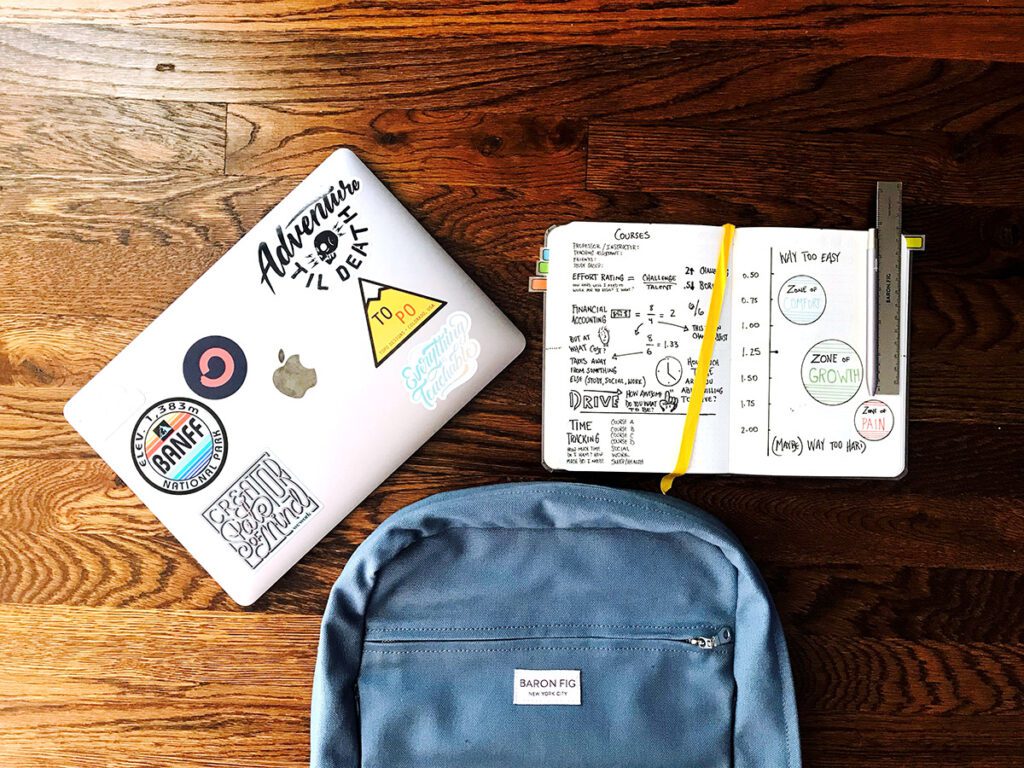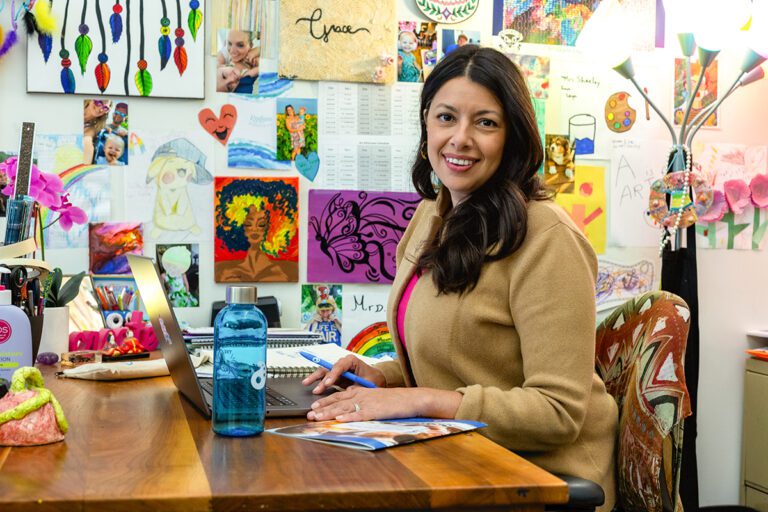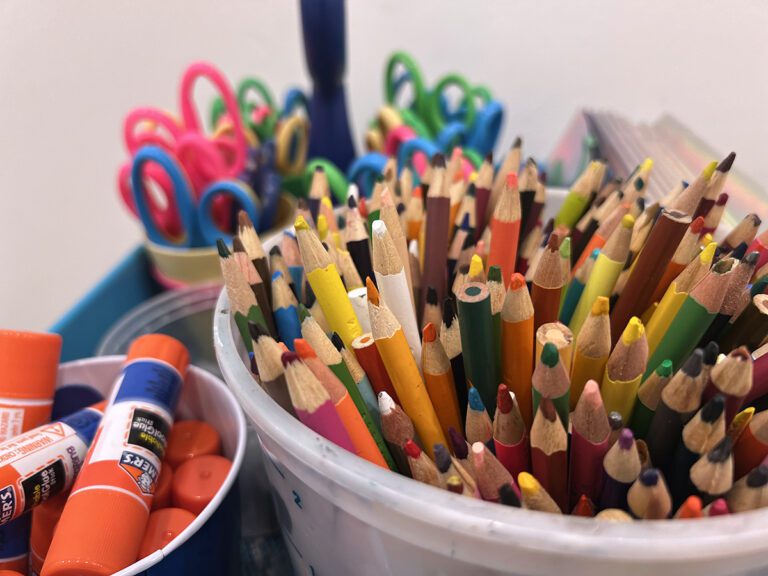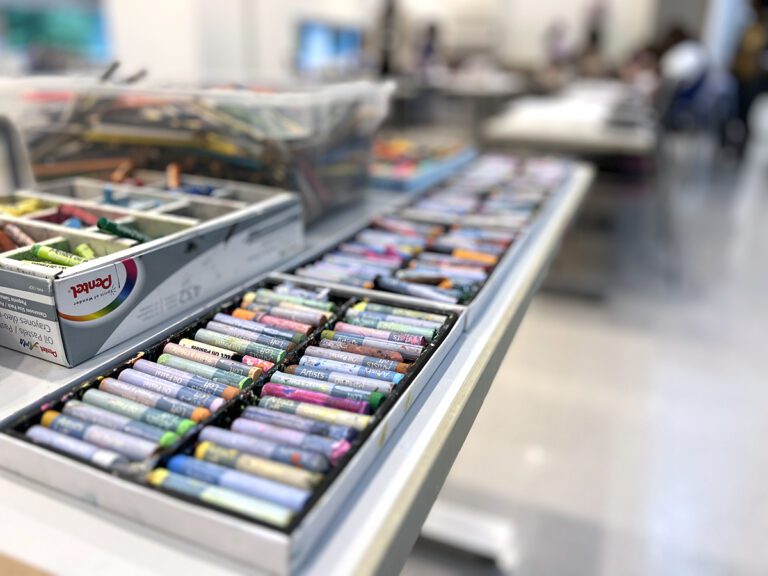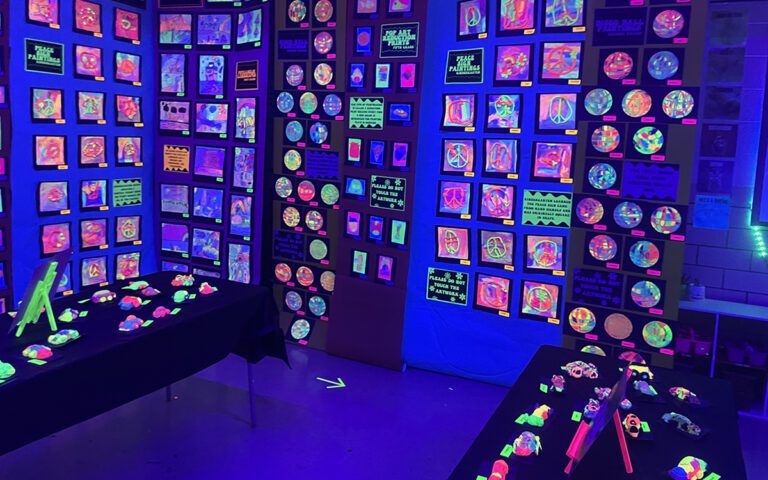Are you a new art teacher or new to teaching art? You may be a bit overwhelmed with where to start. Don’t worry—we’ve got you covered! First, take a deep breath and think about the amazing things you’ll do this summer during your time off. From vacations to soaking in the sun, it’s important to recharge away from the classroom. Then, use the timetable below to break down your to-do list. Infuse a little intentional prep over the summer months to help you feel and be ready come August!
Follow this timetable so you will feel refreshed and prepared for your first day in the art room!
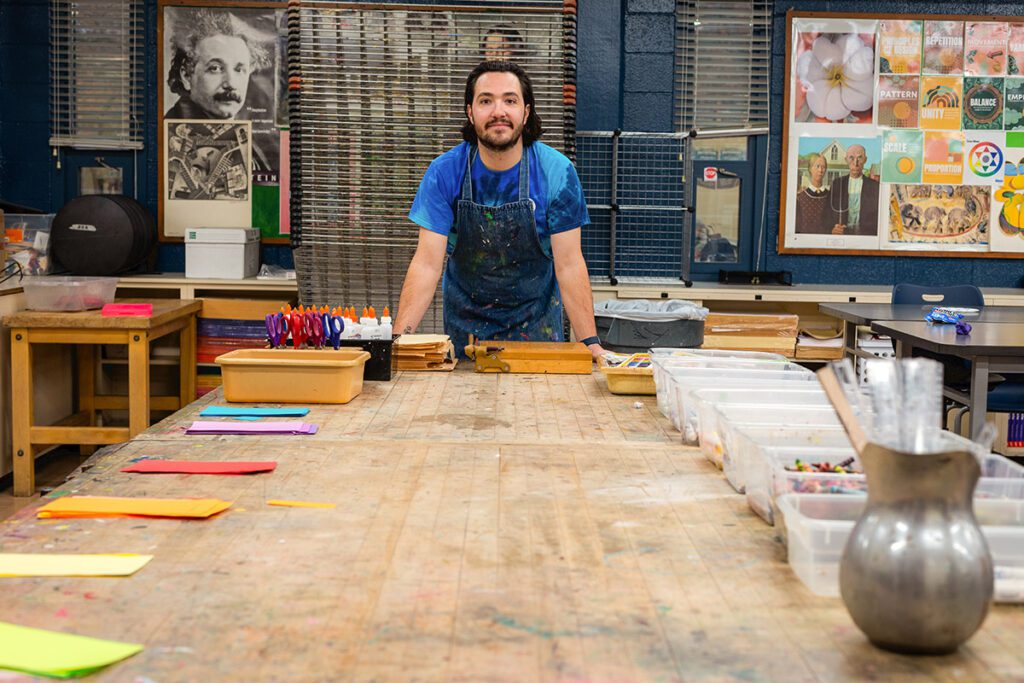
Early June: Fresh Start
It’s hard to think about August when you’re finishing a degree or closing out a classroom. But June is the perfect time to create a curriculum outline and get a head start on ordering supplies. See if you can pop into your classroom for a sneak peek and a glimpse of your inventory. Sometimes supply orders can take a few weeks to trickle in, so you’ll want to be all set before students walk through the door. Build confidence with new lessons and materials by scheduling professional development or allotting an hour or two in your schedule to play with new materials and techniques!
What do I think about?
- What basic supplies will you need to get started?
- Will your administrators be around to answer questions?
- Can you get a few hours in your classroom?
- What are the best ways and times to order supplies?
- What tools and materials need replacing or replenished?
- What professional development are you excited to fit into your schedule?
- Is there a mandatory curriculum or scope and sequence to follow?
- How much flexibility do you have to plan your curriculum?
How do I break it down?
- Create a general outline for the year.
- Contact administration and schedule a quick classroom visit.
- Connect with direct colleagues and request a mentor.
- Compile and order your essential supplies list.
- Register for a course or the Summer NOW Conference.
June-July: Time to Celebrate!
By mid-June and into July, you’re getting into your summer groove. This is a great time to sprinkle in some planning and inspiration with your morning coffee. Start thinking about artists who inspire you and ways to bring them into your curriculum. Create a digital folder to save lessons from your favorite art teachers.
What do I think about?
- Which artists are you obsessed with right now?
- How can you connect those artists to your lessons?
- What media and techniques will you teach?
- How will you scaffold materials and processes?
- How will you keep your planning and ideas organized and accessible?
How do I break it down?
- Review your curriculum outline for key topics.
- Create digital folders to stay organized.
- Sift through FLEX Curriculum for lessons and resources.
- Scroll through social media and follow your favorite art teachers.
- Add artists that inspire.
Late July: Full Force Summer
Late July is the month to focus on you. It’s not easy to go back into school mode when you know you only have a few weeks left of summer break. Make sure to fill your bucket by spending time with your friends and family. Use these weeks to establish positive habits you want to carry through the school year.
What do I think about?
- What are your top three bucket fillers?
- How will you schedule time to make art?
- Where can you find inspiration?
- What good habits will you focus on building?
How do I break it down?
- Make art and play with new materials!
- Read a good book.
- Visit your favorite art museum.
- Attend the Summer NOW Conference.
- Try a simple recipe, go for a run, or enjoy some yoga.
Early August: Wind Down
Early August is the time to get your brain moving into the new school year. Plot out your first month of lessons and dig into your first week’s activities. You may be able to sneak in a visit to your classroom but a lot of this planning can still happen poolside.
What do I think about?
- How will you get to know your students starting on day one?
- How will you introduce them to your classroom environment, materials, and tools?
- What kind of systems do you want to model through activities in the first month?
- How will you connect with your students’ families?
How do I break it down?
- Brainstorm first-week activities.
- Add in “Get to Know You” activities.
- Plan the first month of lessons.
- Set up your Learning Management System.
- Create a template to connect with parents and guardians.
August: Inservice Days
These days overflow with introductions, meetings, and getting to know your school. Pick up your staff ID, learn how to navigate your gradebook, and start unpacking your classroom. It will be very tempting to get your room looking perfect, but don’t stress! Your environment will come alive when your students fill those seats. Give yourself the grace to work on your space as you go this year, keeping in mind that amazing art rooms take years to decorate! Instead, schedule time to meet with a mentor or support colleagues. If you work in a team or department, make sure to touch base with them too.
What do I think about?
- What are my must-dos in the classroom to have a successful first week?
- Who are the custodial staff?
- What materials will I need for the first week’s activities?
- How should I set up my gradebook to align with my colleagues/department and district grading policies?
How do I break it down?
- Begin setting up your physical space.
- Review your rosters for IEPs, 504 Plans, and behavior plans.
- Prep all of your first-week materials.
- Finalize your syllabus and set up your gradebook.
- Meet with colleagues, mentor teacher, and other support staff.
August: First Week of School!
There is nothing more exciting than the first week of school! Those first-day jitters will melt away quickly as you settle into your art teacher energy. Now’s the time to dig into getting to know your students with fun and scaffolded activities. Consider how you will teach and model procedures and expectations. This is also the time to review your evaluation paperwork, set goals, and proactively prep your subfolder.
What do I think about?
- How will you learn and remember students’ names?
- How do you want your students to manage materials and expectations?
- What do you want your families to know about you?
- How are you evaluated?
- Who are your colleagues and where can you go for support?
- What sub plans can you prep for emergencies?
How do I break it down?
- Send out your introduction letter to families.
- Consider material management systems.
- Start planning out the next month’s lessons.
- Check your evaluation expectations.
- Prepare a subfolder or sub tub of simple yet engaging one-day activities.
The to-do list in the art room is never-ending, so don’t feel pressured to have everything picture-perfect by day one. Give yourself a break! Intentionally tackle small things over the next few months so it’s not overwhelming when you walk through the doors. Once the school year begins, you will find your flow and support crew. In the meantime, rest and recharge this summer. You will be a phenomenal art teacher with the capacity to pour into your students when you live a healthy and balanced life. Use the guidelines above to take the guesswork out of where to start so you can begin the year refreshed and prepared!
What questions do you still have about starting your new role?
How do you balance rest with gearing up for a new school year?
Magazine articles and podcasts are opinions of professional education contributors and do not necessarily represent the position of the Art of Education University (AOEU) or its academic offerings. Contributors use terms in the way they are most often talked about in the scope of their educational experiences.


